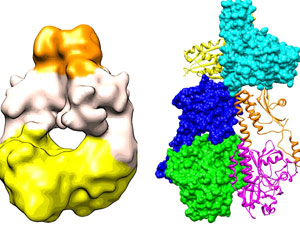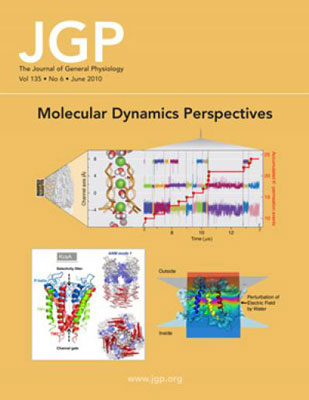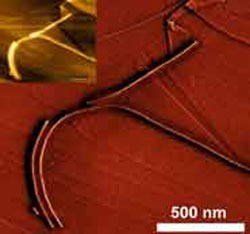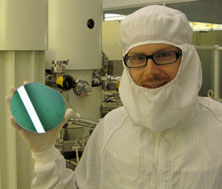 Light-emitting diodes are gaining ground: They are now being used as background lighting for displays. But the manufacturing of complex LED optics is still complex and expensive. A new technology is revolutionizing production: Large-scale LED components can now be manufactured cost-effectively.
Light-emitting diodes are gaining ground: They are now being used as background lighting for displays. But the manufacturing of complex LED optics is still complex and expensive. A new technology is revolutionizing production: Large-scale LED components can now be manufactured cost-effectively.
Jun 1st, 2010
Read more
 Counterfeit products create losses in the billions each year. Beside the economic damages, all too often additional risks arise from the poor materials and shoddy workmanship of 'knock-off artists'. Yet with the aid of fluorescing dyes, materials can be individually tagged and identified with certainty.
Counterfeit products create losses in the billions each year. Beside the economic damages, all too often additional risks arise from the poor materials and shoddy workmanship of 'knock-off artists'. Yet with the aid of fluorescing dyes, materials can be individually tagged and identified with certainty.
Jun 1st, 2010
Read more
On December 2 - 3, 2010 experts from all over the world will gather for the 7th NanoMed conference in Berlin to discuss the state of the art in biomedical applications of nanotechnology. This year's Focus Topic is Nanotechnology-Enabled Diagnosis and Treatment of Cancer.
Jun 1st, 2010
Read more
The Beilstein-Institut, a non-profit foundation, launches a scientific journal in the area of nanotechnology and nanoscience. The 'Beilstein Journal of Nanotechnology' is an Open Access Journal, which is globally available and publishes the latest research results and reviews. Publishing in this Journal is offered without any fees for authors and readers. The call for papers starts on June 1, 2010.
Jun 1st, 2010
Read more
 When the first warm rays of springtime sunshine trigger a burst of new plant growth, it's almost as if someone flicked a switch to turn on the greenery and unleash a floral profusion of color. Opening a window into this process, scientists have deciphered the structure of a molecular 'switch' much like the one plants use to sense light.
When the first warm rays of springtime sunshine trigger a burst of new plant growth, it's almost as if someone flicked a switch to turn on the greenery and unleash a floral profusion of color. Opening a window into this process, scientists have deciphered the structure of a molecular 'switch' much like the one plants use to sense light.
May 31st, 2010
Read more
 There have been impressive advances in computational methods, allowing researchers to better understand biological and physiological systems at the atomic level. In its latest Perspectives in General Physiology series, the Journal of General Physiology (JGP) offers an in-depth look at several of these methods and the advantages of each as applied to membrane proteins, with special focus on ion channels.
There have been impressive advances in computational methods, allowing researchers to better understand biological and physiological systems at the atomic level. In its latest Perspectives in General Physiology series, the Journal of General Physiology (JGP) offers an in-depth look at several of these methods and the advantages of each as applied to membrane proteins, with special focus on ion channels.
May 31st, 2010
Read more
Researchers at the University of Iceland, University of Cologne and the Fraunhofer Institute Jena have demonstrated net optical amplification in a plasmonic waveguide.
May 31st, 2010
Read more
A $3 million Ohio Third Frontier award to the University of Dayton Research Institute will fund the scale-up and production of a 'game-changing' new nanomaterial that will allow composites to multitask - a wind turbine tower that can de-ice its own blades in winter, or store energy to release on a calm day, powering a grid even when its blades are not moving.
May 31st, 2010
Read more
 A collaboration between researchers ha led to the discovery of a new self-assembly method for controlling the dimensions of cylinders created from polymer precursors which contain two chemically different segments joined together, so the length of the cylinders can be precisely controlled.
A collaboration between researchers ha led to the discovery of a new self-assembly method for controlling the dimensions of cylinders created from polymer precursors which contain two chemically different segments joined together, so the length of the cylinders can be precisely controlled.
May 31st, 2010
Read more
A Taiwan research team has developed a new approach for investigating the amount of nano-/microparticles taken up by mammalian cells.
May 31st, 2010
Read more
Der neue Nano-Energie-Newsletter des Centers for Nanointegration Duisburg-Essen CeNIDE erscheint kuenftig drei bis vier Mal jaehrlich.
May 31st, 2010
Read more
 The silicon transistors in your computer may be replaced in ten years by transistors based on carbon nanotubes. This is what scientists at the University of Gothenburg are hoping - they have developed a method to control the nanotubes during production.
The silicon transistors in your computer may be replaced in ten years by transistors based on carbon nanotubes. This is what scientists at the University of Gothenburg are hoping - they have developed a method to control the nanotubes during production.
May 31st, 2010
Read more
Researchers have theoretically developed and experimentally demonstrated that the artificial catalytic nucleic acids called DNAzymes and their substrates constitute a platform for the logic operations essential to computational processes.
May 31st, 2010
Read more
Nanopartikel, die Medikamente durch die biologischen Barrieren des Koerpers an ihren Wirkungsort transportieren, stehen im Mittelpunkt des wissenschaftlichen Interesses von Claus-Michael Lehr.
May 31st, 2010
Read more
Scientists have discovered a way of mimicking the stunningly bright and beautiful colours found on the wings of tropical butterflies. The findings could have important applications in the security printing industry, helping to make bank notes and credit cards harder to forge.
May 30th, 2010
Read more
In a development that could lead to novel carbon composites and touch-screen displays, researchers from Rice University and the Technion-Israel Institute of Technology today unveiled a new method for producing bulk quantities of one-atom-thick sheets of carbon called graphene.
May 30th, 2010
Read more
 Light-emitting diodes are gaining ground: They are now being used as background lighting for displays. But the manufacturing of complex LED optics is still complex and expensive. A new technology is revolutionizing production: Large-scale LED components can now be manufactured cost-effectively.
Light-emitting diodes are gaining ground: They are now being used as background lighting for displays. But the manufacturing of complex LED optics is still complex and expensive. A new technology is revolutionizing production: Large-scale LED components can now be manufactured cost-effectively. 





 Subscribe to our Nanotechnology News feed
Subscribe to our Nanotechnology News feed